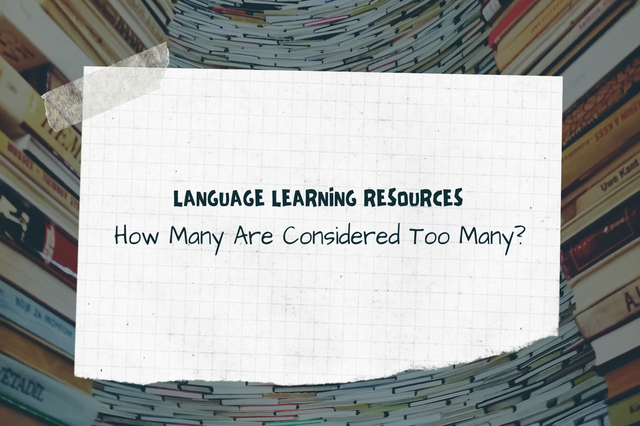
Resources can be as overwhelming as language learning if done incorrectly. The sign? When you don’t have enough time to spend on each but truthfully, it’s more than that.
Everyone is different in terms of how many they can handle at a time. What one thinks is too many may not be the case for another. So, how many are considered too many?
It depends on a few things.
For beginners, it’s better to focus on one main resource and two or three supplement resources. For example, I’ve been learning Thai for almost a year (at the moment of writing).
My primary resource is language software where I’m learning common phrases. My supplement resources are Memrise (for learning the Thai alphabet) and TV series (for comprehension and enjoyment).
For intermediate, you can have as many as you think is necessary for each skill or a particular skill(s) you want to improve. However, for advanced learners, let me quote one of the replies I got
It’s more like a part of life than a collection of resources – bluebirdofanything
If you’re learning the target language for a specific reason and/or have a deadline such as working or studying abroad then having more resources for all skills (even as a beginner) is important but you need to be very selective.
You could choose three resources for speaking, and two resources each for listening, writing and reading. Obviously, that seems like a lot if you’re trying to do all in one day but not so much if you spread them out.

If your objective is the opposite, the only matter is your capability.
If you’re an auditory learner, pick a course, app, or language program that’s audio-based such as Pimsleur, Think In Italian, etc. If you’re a visual learner, choose an interactive course, app or website such as SpanishDict.
If you’re a tactile learner, sign up for a one-on-one course such as Lingoda, or language meetup.
Once you identify your style the journey becomes more enjoyable, hopefully.
It’s crucial to always choose quality over quantity. Find one that matches the above points. You don’t want to end up having low-quality resources either.
Let’s say you found one that checked all the boxes but missing one vital thing that’s going to be a key point in the learning process such as learning single words without definite articles in Spanish is going to leave you guessing its gender.
Even if there are, learning words and phrases in context is much better because you get to know how they change depending on their role.
Those you have chosen must also go hand in hand with each other. For instance, you’re using Speakly to improve your speaking and practice speaking with natives to improve your pronunciation and build your confidence at the same time.
This undoubtedly will help reach your goal if that’s what you’re after.
There’s a plethora of apps and courses out there that just don’t get you to practice speaking while they make you addicted to using them – Stefano Lodola

One more thing to keep in mind is don’t be a hoarder. This was me back then. When looking for resources see if they are similar. If yes, pick just one.
Don’t do both because it will hinder you from reaching the next level. You may as well use that precious time on another resource that’s going to make a significant leap.
Language learning resources are like shiny objects. We can’t help but feel attracted to them. The moment we realized a lot of time had been wasted. Hence, it’s important to know what you’re looking for in a resource.
People say there is no such thing as too many. Do you agree? How many resources do you currently use?
©2024 Together We Learn More
©2024 Together We Learn More